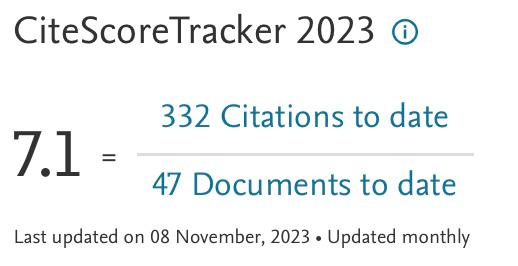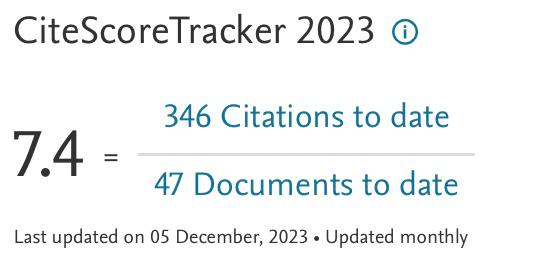Study of The Energy, Economic, Environmental, and Thermal Comfort Impact of The Integration of Hemp Concrete and Hemp Plaster in a Residential Building Envelope in Morocco
DOI:
https://doi.org/10.37934/arnht.23.1.127Keywords:
Energy efficiency, Carbon footprint, Thermal comfort, Ecological materials, Numerical simulation, Moroccan climatesAbstract
In the building sector, the majority of efforts are aimed at achieving greater energy efficiency, a low carbon footprint, and optimum thermal comfort to make buildings more efficient, more sustainable, and more pleasant to live in. In this context, this paper aims to assess the impact of integrating environmentally friendly and green materials (lime-hemp plaster and hemp concrete) into the envelope of an existing residential building. A numerical simulation study was carried out using TRNSYS 18, in four Moroccan climates: Mediterranean, cold semi-arid, hot semi-arid, and hot and dry desert, to study the energy, economic, and environmental impact, as well as that of the thermal comfort. The proposed construction scenarios are compared with the reference scenario in terms of heating and cooling requirements, electricity bills, carbon footprint, and percentage of annual thermal discomfort. The results show that energy savings are highest in the cold semi-arid climate (Oujda) at around 24%. Hemp concrete construction is more effective in reducing heating requirements, with a reduction of up to 39.4%. For cooling, the reduction is only 15.5%. The economic and environmental study shows that using materials such as hemp concrete in an optimal construction and climatic context can reduce electricity bills by 25% and CO2 emissions by around 23.7%. However, the reduction in terms of hours of discomfort is not yet significant enough. Hence the need to combine this technique with other strategies based on bioclimatic design. The use of hemp plaster and concrete for renovating existing buildings or constructing new ones represents a very promising alternative from several points of view: energy, economic, and environmental.
Downloads
References
Global Energy Crisis – Topics - IEA. https://www.iea.org/topics/global-energy-crisis. (accessed Apr. 10, 2024).
Shafiee, Shahriar, and Erkan Topal. "When will fossil fuel reserves be diminished?." Energy policy 37, no. 1 (2009): 181-189. https://doi.org/10.1016/j.enpol.2008.08.016 DOI: https://doi.org/10.1016/j.enpol.2008.08.016
Ratledge, Nathan, Laura Zachary, and Chase Huntley. "Emissions from fossil fuels produced on US federal lands and waters present opportunities for climate mitigation." Climatic Change 171, no. 1 (2022): 11. https://doi.org/10.1007/s10584-021-03302-x DOI: https://doi.org/10.1007/s10584-021-03302-x
Bagherian, Mohammad Ali, and Kamyar Mehranzamir. "A comprehensive review on renewable energy integration for combined heat and power production." Energy Conversion and Management 224 (2020): 113454. https://doi.org/10.1016/j.enconman.2020.113454 DOI: https://doi.org/10.1016/j.enconman.2020.113454
IAE | International Energy Agency. World Energy Outlook 2022. https://www.iea.org/reports/world-energy-outlook-2022. Accessed April 10, 2024.
Boulakhbar, M., B. Lebrouhi, Tarik Kousksou, S. Smouh, A. Jamil, M. Maaroufi, and M. Zazi. "Towards a large-scale integration of renewable energies in Morocco." Journal of Energy Storage 32 (2020): 101806. https://doi.org/10.1016/j.est.2020.101806 DOI: https://doi.org/10.1016/j.est.2020.101806
"National energy efficiency strategy." Accessed April 10, 2024. https://www.mem.gov.ma/Lists/Lst_rapports/Attachments/33/Strat%C3%A9gue%20Nationale%20de%20l'Efficacit%C3%A9%20%C3%A9nerg%C3%A9tique%20%C3%A0%20l'horizon%202030.pdf.
"AMEE | Energy efficiency in buildings." Accessed April 10, 2024. https://www.amee.ma/en/node/118.
Reddy, BV Venkatarama, and K. S. Jagadish. "Embodied energy of common and alternative building materials and technologies." Energy and buildings 35, no. 2 (2003): 129-137. https://doi.org/10.1016/S0378-7788(01)00141-4 DOI: https://doi.org/10.1016/S0378-7788(01)00141-4
Petrescu, Tudor-Cristian, Johannes T. Voordijk, and Petru Mihai. "Developing a TRL-oriented roadmap for the adoption of biocomposite materials in the construction industry." Frontiers of Engineering Management (2021): 1-14. https://doi.org/10.1007/s42524-021-0154-4 DOI: https://doi.org/10.1007/s42524-021-0154-4
Asdrubali, Francesco, Francesco D'Alessandro, and Samuele Schiavoni. "A review of unconventional sustainable building insulation materials." Sustainable Materials and Technologies 4 (2015): 1-17. https://doi.org/10.1016/j.susmat.2015.05.002 DOI: https://doi.org/10.1016/j.susmat.2015.05.002
de Bruijn, Paulien Brigitte, Knut-Håkan Jeppsson, Kenneth Sandin, and Christer Nilsson. "Mechanical properties of lime–hemp concrete containing shives and fibres." Biosystems engineering 103, no. 4 (2009): 474-479. https://doi.org/10.1016/j.biosystemseng.2009.02.005 DOI: https://doi.org/10.1016/j.biosystemseng.2009.02.005
Barbhuiya, Salim, and Bibhuti Bhusan Das. "A comprehensive review on the use of hemp in concrete." Construction and Building Materials 341 (2022): 127857. https://doi.org/10.1016/j.conbuildmat.2022.127857 DOI: https://doi.org/10.1016/j.conbuildmat.2022.127857
Nguyen, Tai Thu, Vincent Picandet, Patrick Carre, Thibaut Lecompte, Sofiane Amziane, and Christophe Baley. "Effect of compaction on mechanical and thermal properties of hemp concrete." European Journal of Environmental and Civil Engineering 14, no. 5 (2010): 545-560. https://doi.org/10.1080/19648189.2010.9693246 DOI: https://doi.org/10.3166/ejece.14.545-560
Arizzi, Anna, Monika Brümmer, Inés Martín-Sanchez, Giuseppe Cultrone, and Heather Viles. "The influence of the type of lime on the hygric behaviour and bio-receptivity of hemp lime composites used for rendering applications in sustainable new construction and repair works." PLoS One 10, no. 5 (2015): e0125520. https://doi.org/10.1371/journal.pone.0125520 DOI: https://doi.org/10.1371/journal.pone.0125520
Arnaud, Laurent. "Mechanical and thermal properties of hemp mortars and wools: experimental and theoretical approaches." Bioresource Hemp (2000).
Bevan, Rachel, and Tom Woolley. "Hemp lime construction." A guide to building with hemp lime composites, Bracknell (2008).
Stevulova, Nadezda, Lucia Kidalova, Julia Cigasova, Jozef Junak, Alena Sicakova, and Eva Terpakova. "Lightweight composites containing hemp hurds." Procedia Engineering 65 (2013): 69-74. https://doi.org/10.1016/j.proeng.2013.09.013 DOI: https://doi.org/10.1016/j.proeng.2013.09.013
Arizzi, Anna, Giuseppe Cultrone, Monika Brümmer, and Heather Viles. "A chemical, morphological and mineralogical study on the interaction between hemp hurds and aerial and natural hydraulic lime particles: Implications for mortar manufacturing." Construction and Building Materials 75 (2015): 375-384. https://doi.org/10.1016/j.conbuildmat.2014.11.026 DOI: https://doi.org/10.1016/j.conbuildmat.2014.11.026
Evrard, Arnaud, A. De Herde, and J. Minet. "Dynamical interactions between heat and mass flows in Lime-Hemp Concrete." In Research in building physics and building engineering, pp. 69-76. CRC Press, 2020.
Bledzki, A. K., and Jochen Gassan. "Composites reinforced with cellulose based fibres." Progress in polymer science 24, no. 2 (1999): 221-274. https://doi.org/10.1016/S0079-6700(98)00018-5 DOI: https://doi.org/10.1016/S0079-6700(98)00018-5
Elfordy, S., F. Lucas, Franc Tancret, Y. Scudeller, and L. Goudet. "Mechanical and thermal properties of lime and hemp concrete (“hempcrete”) manufactured by a projection process." Construction and Building Materials 22, no. 10 (2008): 2116-2123. https://doi.org/10.1016/j.conbuildmat.2007.07.016 DOI: https://doi.org/10.1016/j.conbuildmat.2007.07.016
Arnaud, Laurent, and Etienne Gourlay. "Experimental study of parameters influencing mechanical properties of hemp concretes." Construction and building materials 28, no. 1 (2012): 50-56. https://doi.org/10.1016/j.conbuildmat.2011.07.052 DOI: https://doi.org/10.1016/j.conbuildmat.2011.07.052
Shea, Andy, Mike Lawrence, and Pete Walker. "Hygrothermal performance of an experimental hemp–lime building." Construction and building materials 36 (2012): 270-275. https://doi.org/10.1016/j.conbuildmat.2012.04.123 DOI: https://doi.org/10.1016/j.conbuildmat.2012.04.123
Cerezo, V. "Mechanical, thermal and acoustic properties of a material based on plant particles: experimental approach and theoretical modeling." PhD diss., Doctoral thesis. Mechanics, Energy, Civil Engineering and Acoustics. INSA Lyon, France, 2005.
Walker, R., and Sara Pavia. "Moisture transfer and thermal properties of hemp–lime concretes." Construction and Building Materials 64 (2014): 270-276. https://doi.org/10.1016/j.conbuildmat.2014.04.081 DOI: https://doi.org/10.1016/j.conbuildmat.2014.04.081
Di Capua, Salvatore Emanuele, Luisa Paolotti, Elisa Moretti, Lucia Rocchi, and Antonio Boggia. "Evaluation of the environmental sustainability of hemp as a building material, through life cycle assessment." Rigas Tehniskas Universitates Zinatniskie Raksti 25, no. 1 (2021): 1215-1228. https://doi.org/10.2478/rtuect-2021-0092 DOI: https://doi.org/10.2478/rtuect-2021-0092
Pretot, Sylvie, Florence Collet, and Charles Garnier. "Life cycle assessment of a hemp concrete wall: Impact of thickness and coating." Building and Environment 72 (2014): 223-231. https://doi.org/10.1016/j.buildenv.2013.11.010 DOI: https://doi.org/10.1016/j.buildenv.2013.11.010
Arrigoni, Alessandro, Renato Pelosato, Paco Melià, Gianluca Ruggieri, Sergio Sabbadini, and Giovanni Dotelli. "Life cycle assessment of natural building materials: the role of carbonation, mixture components and transport in the environmental impacts of hempcrete blocks." Journal of Cleaner Production 149 (2017): 1051-1061. https://doi.org/10.1016/j.jclepro.2017.02.161 DOI: https://doi.org/10.1016/j.jclepro.2017.02.161
Sinka, Maris, Philip Van den Heede, Nele De Belie, Diana Bajare, Genadijs Sahmenko, and Aleksandrs Korjakins. "Comparative life cycle assessment of magnesium binders as an alternative for hemp concrete." Resources, Conservation and Recycling 133 (2018): 288-299. https://doi.org/10.1016/j.resconrec.2018.02.024 DOI: https://doi.org/10.1016/j.resconrec.2018.02.024
Kaddouri, Hicham, Abderrahim Abidouche, Mohamed Saidi Hassani Alaoui, Ismael Driouch, Abdelouahad Ait Msaad, and Said Hamdaoui. "Numerical simulation study of the effect of integrating hemp concrete and passive strategies on the energy consumption of a residential building in Al-Hoceima." Statistics, Optimization & Information Computing 12, no. 3 (2024): 727-736. https://doi.org/10.19139/soic-2310-5070-1933 DOI: https://doi.org/10.19139/soic-2310-5070-1933
Kaddouri, Hicham, Abderrahim Abidouche, Mohamed Saidi Hassani Alaoui, Ismael Driouch, and Said Hamdaoui. "Impact of Insulation using Bio-sourced Materials on the Thermal and Energy Performance of a Typical Residential Building in Morocco." Journal of Advanced Research in Fluid Mechanics and Thermal Sciences 117, no. 1 (2024): 43-59. https://doi.org/10.37934/arfmts.117.1.4359 DOI: https://doi.org/10.37934/arfmts.117.1.4359
Charai, Mouatassim, Haitham Sghiouri, Ahmed Mezrhab, and Mustapha Karkri. "Thermal insulation potential of non-industrial hemp (Moroccan cannabis sativa L.) fibers for green plaster-based building materials." Journal of Cleaner Production 292 (2021): 126064. https://doi.org/10.1016/j.jclepro.2021.126064 DOI: https://doi.org/10.1016/j.jclepro.2021.126064
Dlimi, M., R. Agounoun, I. Kadiri, R. Saadani, and M. Rahmoune. "Thermal performance assessment of double hollow brick walls filled with hemp concrete insulation material through computational fluid dynamics analysis and dynamic thermal simulations." e-Prime-Advances in Electrical Engineering, Electronics and Energy 3 (2023): 100124. https://doi.org/10.1016/j.prime.2023.100124 DOI: https://doi.org/10.1016/j.prime.2023.100124
Essaghouri, Laila, Ruichang Mao, and Xiaodong Li. "Environmental benefits of using hempcrete walls in residential construction: An LCA-based comparative case study in Morocco." Environmental Impact Assessment Review 100 (2023): 107085. https://doi.org/10.1016/j.eiar.2023.107085 DOI: https://doi.org/10.1016/j.eiar.2023.107085
BINAYATE Perspective, National Agency for Energy Efficiency, Morocco (2014).
ISO, NM. "7730 (2010). Institut Marocain de Normalisation, Ergonomie des ambiances thermiques-Détermination analytique et interpretation du confort thermique par le calcul des indices PMV et PPD et par des criteres de confort thermique local."
Meteonorm Global Meteorological Database Version 8.0.2 (2020), www.meteonorm.com (accessed March 8, 2024).
Kottek, Markus, Jürgen Grieser, Christoph Beck, Bruno Rudolf, and Franz Rubel. "World map of the Köppen-Geiger climate classification updated." (2006). DOI: https://doi.org/10.1127/0941-2948/2006/0130
Klein, S. A. Trnsys 18. Sol. Energy Lab. Univ. Wisconsin-Madison 3, 7–36. 2018.
Sghiouri, Haitham, Ahmed Mezrhab, Mustapha Karkri, and Hassane Naji. "Shading devices optimization to enhance thermal comfort and energy performance of a residential building in Morocco." Journal of building Engineering 18 (2018): 292-302. https://doi.org/10.1016/j.jobe.2018.03.018 DOI: https://doi.org/10.1016/j.jobe.2018.03.018
Samri, Driss. "Analyse physique et caractérisation hygrothermique des matériaux de construction: approche expérimentale et modélisation numérique." Ecole Nationale des Travaux Publics de l’Etat (2008).
Collet, F. Hydric and Thermal Characterization of Engineering Materials. PhD diss., National Institute of Applied Sciences, Rennes, 2018.
"Official ONEE website - Electricity branch." Accessed April 10, 2024. http://www.one.org.ma/FR/pages/interne.asp?esp=1&id1=3&id2=113&t2=1.
Shi, Ligang, Xinzhu Qi, Zhaojing Yang, Lulu Tao, Yuqing Li, Jinghan Qiu, and Xintong Jiang. "Comparative study of greenhouse gas emission calculations and the environmental impact in the life cycle assessment of buildings in China, Finland, and the United States." Journal of Building Engineering 70 (2023): 106396. https://doi.org/10.1016/j.jobe.2023.106396 DOI: https://doi.org/10.1016/j.jobe.2023.106396
Song, Bing, Lujian Bai, and Liu Yang. "Analysis of the long-term effects of solar radiation on the indoor thermal comfort in office buildings." Energy 247 (2022): 123499. https://doi.org/10.1016/j.energy.2022.123499 DOI: https://doi.org/10.1016/j.energy.2022.123499
ISO 7726, Ergonomics 1998. 1998.
Dhakal, Ujwal, Umberto Berardi, Mark Gorgolewski, and Russell Richman. "Hygrothermal performance of hempcrete for Ontario (Canada) buildings." Journal of cleaner production 142 (2017): 3655-3664. https://doi.org/10.1016/j.jclepro.2016.10.102 DOI: https://doi.org/10.1016/j.jclepro.2016.10.102
Le, AD Tran, Chadi Maalouf, Ton Hoang Mai, Etienne Wurtz, and Florence Collet. "Transient hygrothermal behaviour of a hemp concrete building envelope." Energy and buildings 42, no. 10 (2010): 1797-1806. https://doi.org/10.1016/j.enbuild.2010.05.016 DOI: https://doi.org/10.1016/j.enbuild.2010.05.016


























